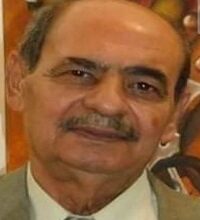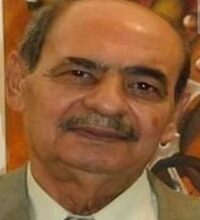
واشنطن- في اختبار لسرعة التصرف عند مواجهة الخطر، أتذكر أنني، ومنذ عقود، أعطيت أحد طلابي موضوعاً ليكتب عنه: أنت في السيارة تقودها في طريق ينحدر إلى أسفل هضبة ! فجأة تكتشف أن الطريق ينتهي بحافة إنحدار يقذفك إلى وادٍ سحيق ، دون أية إشارة للإنعطاف يميناً أو يساراً! ماذا تفعل ؟
بكل برودة أعصاب، وفكاهة ظريفة، يجيب : استيقظت من هذا الكابوس ، وشكرت ربي أنني كنت أحلم!
ردٌّ ذكيٌّ أنقذه من الإجابة باللجوء إلى ” الحلم “! لكن حياتنا ليست حلماً! ولايمكن للواقع أن يلجأ إلى الحلم! إن حدث فهو الهروب!
في سيارتي مع زوجتي، عند تقاطع أربع طرق في واشنطن،أتوقف عند الإشارة الحمراء. ثوانٍ وتضاء الإشارة الصفراء، إشارة الإستعداد للمضي، أتحرك ببطء، تُضاء الخضراء،أنطلقُ متابعاً القيادة، فجأة تأتي سيارة مسرعة من الإتجاه الأيسر، ذي الإشارة الحمراء. ولتفادي حادث لامحال واقع ،أديرالمقود وأنعطف بسرعة إلى اليمين، بالتوازي مع سيارة المخالِف .جعلتُ سيارتينا تسيران متوازيتين !
هل كانت سرعة التصرف وحدها هي التي أنقذتنا ! لا ! لم تكن بالكامل! إشارة المرور، الصفراء بالذات ،هي التي نبّهتني بأن الإشارة التي تعقبها ستكون خضراء لي ،وحمراء للقادم من الجهة اليسرى، وجعلتني أتحرك ببطء أنقذنا من الموت.
إنها إشارات المرور! قانون ضبط المتحرك من الأشياء منعاً للتصادم والكوارث. بدأها الرومان بعمود من الحجارة يوضع على جانب الطريق ،توضيحاً لاتجاهات السير والمسافات.تطورت: في العام 1868 صمم البريطاني ” جون بيك نايت” أول إشارات مرور ضوئية بالغاز، بذراعين ،أحمر وأخضر ،وبعمود طوله 23 قدماً يقف شرطي بجانبه، يتحكم بهما على مدارالساعة.في العام 1890 تطورت، ولأول مرة، في الولايات المتحدة الأمريكية،إلى نظام آلي، مالبث أن طوره في العام 1910 المخترع الامريكي “ارنست سيرراين” ليجعل الأضواء تتغير بين الأخضر والأحمر،مضيفاً كلمتي “امشِ” و” قف”. ومن ثم إلى نظام كهربائي في العام 1912، على يد الشرطي الامريكي “ليستر واير”.
تزايدت أعداد الناس. ازدادات آلياتهم. اكتظت الشوارع بها وبهم. تطورت العربات والآليات المتحركة.، حجماً وسرعة. ازدادت الحاجة إلى تلك الإشارات، مع ازدياد أعداد قتلى حوادث السير – يُقال إن في العام 1913 قتل حوالي 4 آلاف شخص في حوادث سير في الولايات المتحدة الامريكية – مع ظهور سيارات هنري فورد، لذا ففي العام 1920، قام الشرطي الأمريكي “وليام بوتس” بإضافة الإشارة الصفراء ،زيادة في الحرص على الأرواح وإعطاء التنبيه للسائق ، كما فعلتْ بي، بأن الإشارة الحمراء قادمة للتو. بعدها زيدت مشتقاتها داخل الأزقة والشوارع ، كممنوع الوقوف، إتجاه واحد، تمهّل، انتبه منعطف ،وما إلى ذلك. و كان قرارالأمم المتحدة ، بعد الحرب العالمية الثانية، بجعلها إشارات متعارف عليها دولياً، ذروة الإعتراف بأهميتها للبشر أجمعين، دون استثناء، فالبشرية واحدة،والخطر واحد ،والمصير واحد أيضاً.
بالتأكيد أنا هنا لست لأستعرض تاريخ إشارات المرور! فمن يدري إلى أين سينتهي تاريخها مع بدء عصر الذكاء الصناعي ، إنما لأقف بكل إحترام لمن بدأ بالفكرة إلى تعميمها عالمياً. إنها قانون التعامل مع حركة الحياة. حقوقها و واجباتها. تنظيمٌ رائدٌ لتحرك البشر فوق هذه الأرض. قوانين احترام الحياة وصونها! قبولٌ مقنعٌ لحقوق الآخرين و تقبّلٌ مرضٍ لواجبات المرء !
أليست هذه هي مكارم الأخلاق التي جاءت بها الشرائع والأديان! أوليست هي أيضاً الحقوق التي نصت عليها دساتير الشعوب، والقيَم و الأعراف الانسانية!
نجحت إشارات المرور في ضبط تحرك وسائل مواصلاتنا، فأنقذت الملايين من الكوارث، وفشلنا نحن البشر، في ضبط أخلاق تواصلنا فأزهقنا ملايين الأرواح .
بوابة الشرق الأوسط الجديدة
The Ethics of Traffic Signals and Our Own Morality
Reda Asaad
Washington, DC– In a test of quick thinking in the face of danger, I remember that decades ago, I gave one of my students a writing prompt:
“You’re driving a car down a road that slopes downhill. Suddenly, you discover the road ends at a cliff that drops into a deep valley—without any warning signs to turn right or left! What do you do?”
With calm nerves and witty humor, he answered:
“I woke up from this nightmare and thanked God I was only dreaming!”
A clever response—he got away
by resorting to the idea of a dream!
But life is not a dream. Reality cannot seek refuge in dreams. If it does, it’s merely running away!
One day, I was in the car with my wife at a four-way intersection in Washington. I stopped at the red light. A few seconds passed and the yellow light came on- indicating it was time to prepare to move. I began to move slowly. The green light came on. I proceeded to drive. Suddenly, a speeding car came from the left, where the light was red. To avoid a guaranteed accident, I quickly turned the steering wheel right, parallel to the violating vehicle, and our cars ended up moving in parallel side by side.
Was it only quick reflexes that saved us?
No—not entirely. The traffic signal, especially the yellow light, was what alerted me that the next signal would be green for me and red for the oncoming vehicle. That warning made me move slowly and ultimately saved us.
Traffic signals are the laws that govern moving objects, preventing collisions and disasters. The Romans started it with stone columns placed along roads to show directions and distances. It evolved: in 1868, a Brit John Peake Knight designed the first gas-lit traffic signals, with red and green arms, mounted on a 23-foot pole operated manually by a police officer.
In 1890, the system was first automated in the United States, and in 1910, American inventor Ernest Sirrine improved it, introducing automatic changes between red and green lights and adding the words “Go” and “Stop.” Then, in 1912, it advanced further to an electric system thanks to American police officer Lester Wire.
As the population grew, so did the number of vehicles. Streets became congested. Vehicles evolved—in size and speed. The need for signals increased, especially as traffic deaths rose. It is said that around 4,000 people were killed in car accidents in the U.S. in 1913 alone, during the rise of Henry Ford’s automobiles.
So, in 1920, American officer William Potts introduced the yellow light—to further protect lives and give drivers a warning, just as it warned me that the red light was coming. Over time, traffic signs increased: No Parking, One Way, Slow Down, Caution: Curve Ahead, and others.
The United Nations’ decision after World War II to make traffic signs globally recognized was the peak of acknowledging their importance to all of humanity. Humanity is one. The danger is one. And the ultimate fate is one, too.
Certainly, I’m not here to review the history of traffic signals. Who knows where their history will go now, in the age of artificial intelligence?
I simply wish to stand in deep respect for those who started the idea and spread it globally.
It’s a law governing the movement of life.
A system of rights and responsibilities.
A pioneering organization of human movement across this earth.
Laws that embody respect for life and its preservation!
A persuasive acceptance of others’ rights and a satisfying embrace of one’s duties!
Isn’t this the very essence of the noble morals taught by religions and sacred laws?
And aren’t these the same rights enshrined in the constitutions of nations, and the values of human customs?
Traffic signals succeeded in regulating the movement of our vehicles—and saved millions from disasters.
But we humans failed to regulate the morals of our communication—and caused the loss of millions of lives.
Great Middle East Gate




